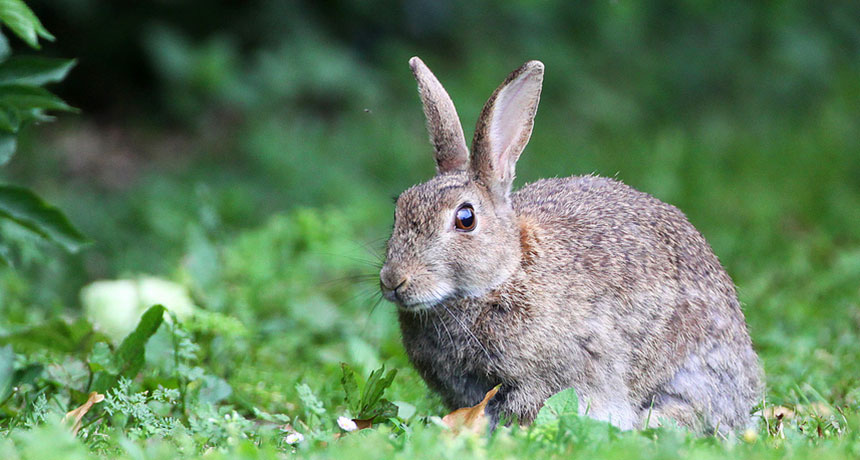Rabbits leave a mark on soil long after they are gone

The European rabbit looks harmless, but in the Kerguelen Islands, the species became invasive. A new study finds that the effect of the rabbits on soil fungus lasts even long after they are gone.
Mark Philpott/Flickr (CC-BY-NC 2.0)
- More than 2 years ago
The remote Kerguelen Islands may be beautiful, but they are unlikely to top anyone’s list of vacation destinations. For one, the weather is awful. Located in the far southern Indian Ocean, the islands’ average highs barely top out at 11.5° C (about 50° F) even in the summer. It rains, snows or sleets for 300 days a year. And sustained winds of 150 kilometers per hour (93 mph) are not uncommon. Transportation to the islands would be another issue — there are no airports, and all people and supplies have to come by ship.
Today, the islands, discovered in 1772 by the French, are home to a small band of scientists and engineers. But in the past, they were a stopping off point for ships on whale- and seal-hunting expeditions, and a company once tried to set up a coal mining operation there. At various times, inhabitants tried to make the islands more hospitable by introducing animals or plants from home. And in 1874, someone brought European rabbits, probably thinking they’d make for tasty meals.
But without any predators around, the rabbits did what rabbits do — reproduced like crazy and ate lots of vegetation. Some native plants, such as the cushion plant Azorella selago, declined while others, like the buzzy burr (Acaena magellenica), became dominant. Bunny burrows made land more susceptible to erosion, and the changes to the soil helped invasions by non-native plants.
Johan Pansu of the University of Grenoble in France and colleagues were curious about the effect of the rabbit invasion on soil fungi, which are part of a healthy soil community. They chose three of the Kerguelen Islands to study: Grande Terre, where rabbits occur in high density in many places, such as the study site of Isthme Bas; Ile Guillou, where rabbits were eradicated in 1994; and Ile Australia, which has never had any rabbits. They collected soil samples and looked for fungal DNA. The results of their study appear September 2 in Biology Letters.
The fungal communities of Ile Australia and Isthme Bas were very different, reflecting the differences in their plant communities — Ile Australia had plenty of natives; Isthme Bas had mostly buzzy burr and non-native dandelions. But even 20 years after the rabbits had been eliminated on Ile Guillou, both the plant and fungal communities still looked like that of Isthme Bas.
“We suggest that the current status of fungal communities on Ile Gillou reflects slow recovery of the native vegetation following rabbit eradication,” the researchers write. That might be because native plants, such as the cushion plant, are slow growers, the team notes. Or there could have been changes to the climate or soil (perhaps by the rabbits themselves) that resulted in the land becoming more hospitable to dandelions than anything else.
Invasive species, it appears, can have long-lasting effects on landscapes, even decades after we have taken the trouble to try to clean up our introduced mess.





